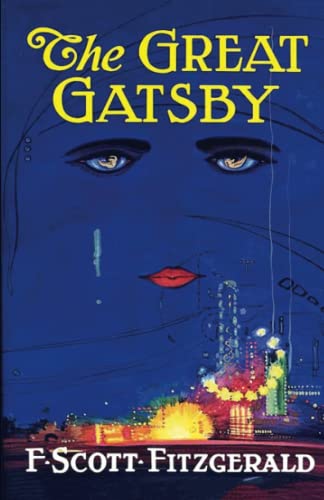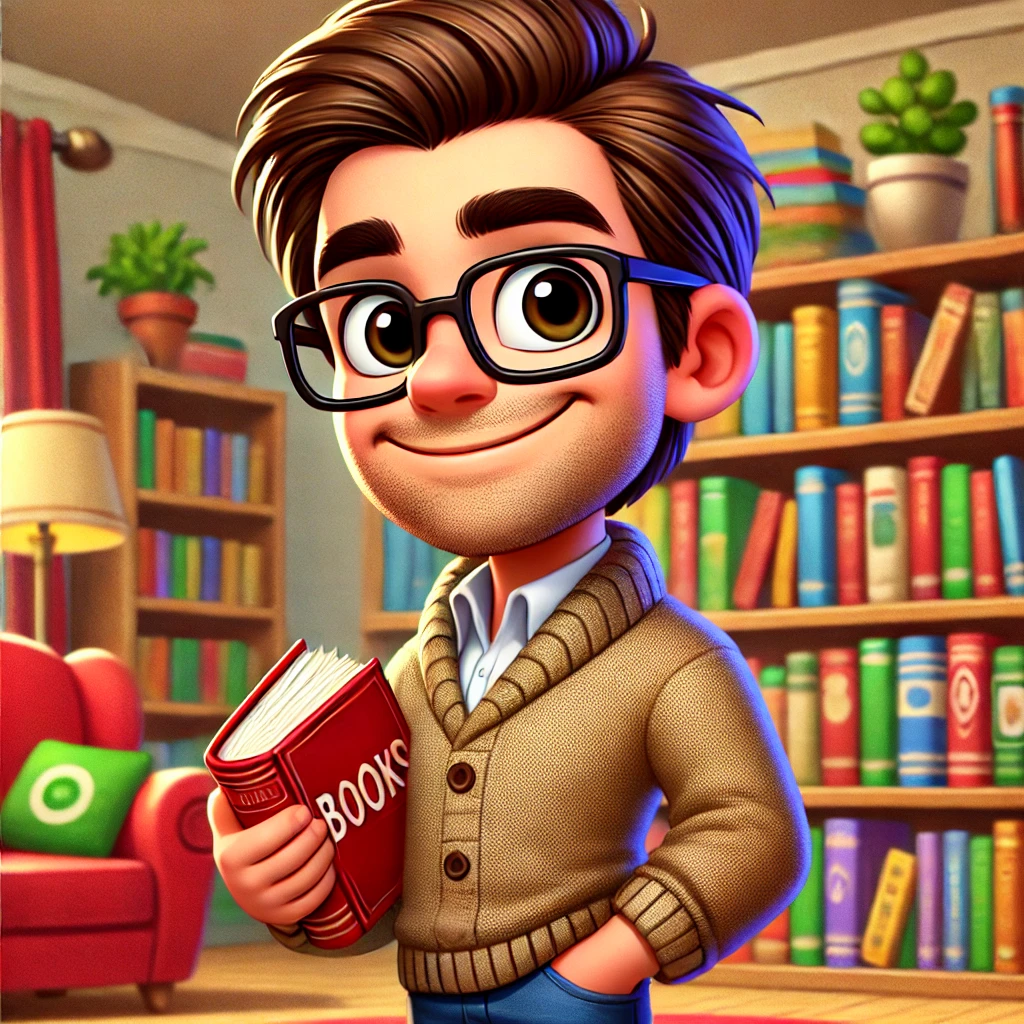Hey there, fellow book lovers! Today you’re in for a treat because this is my review of the glittery, wild, and slightly bonkers ride called The Great Gatsby. I read it, argued about it with my friends (one of them still thinks Gatsby’s a ghost, don’t ask), and now I’m here to spill the beans. I’ll tell you what I liked, what made me scratch my head, and whether you should spend your hard-earned cash on this famous story. Buckle up, bring your best party hat, and let’s get this review started!
The Great Gatsby: A Quick Peek
In a nutsheel
F. Scott Fitzgerald’s The Great Gatsby is a classic American novel from the 1920s. The book fits right into the drama and tragedy genres. It has a touch of romance, too, just enough to make you sigh, roll your eyes, and maybe even throw your hat (if you have one) across the room.
The story follows the mysterious Jay Gatsby and his quest to win back his old flame, Daisy. Along the way, the book explores big themes like love, hope, class, and the super-shiny (but not always so nice) American Dream. There’s a lot of parties, fancy shirts, and even fancier cars, but deep down, the book asks why we chase after the things we do, and what happens when we catch them.
If you like stories about glitz, glam, and a smidge of sadness, this one’s for you. Don’t worry, I won’t spoil the ending, even if my friends say I spoil peanut butter sandwiches.
Unmasking the Cast: Characters and Their Desires in The Great Gatsby
If you have ever been to a party where no one tells the truth about who they are, then you know exactly how it feels to meet the folks in The Great Gatsby. I swear, sometimes I felt like putting on a monocle just to keep up with the drama. Each character here has their own secrets, dreams, and questionable plans, and that’s what keeps the pages turning faster than my cousin Jerry at a buffet.
Let’s start with Jay Gatsby, the king of mysterious millionaires. His whole life is an open house, but his heart is under lock and key. Gatsby throws wild parties, but it’s all just to catch Daisy Buchanan’s eye. His motivation is love mixed with some pretty thick nostalgia. I mean, who else would buy a whole mansion just in the hopes that their crush might drop by?
Daisy, on the other hand, is all about comfort and being adored. She’s drawn to Gatsby’s fantasy but can’t let go of her cushy life with Tom. Speaking of Tom, he’s basically a rich bulldozer, smashing through life to keep his power and pride. He wants Daisy, but he also wants to show everyone he’s the top banana in West Egg. Then there’s Nick Carraway, our narrator. He claims he’s just there to watch, but he gets tangled up in everyone’s mess like me after untangling last year’s Christmas lights.
Last but not least, we have Jordan Baker and Myrtle Wilson, both trying to climb the ladder in their own sneaky ways. Greed, love, regret, and dreams—they all get stirred in this melting pot of oddballs. But hey, their wild motives are just the start. Next, I’ll spill the beans on the wild ride of wealth and love that puts everyone in a pickle jar.
Themes of Wealth and Love in The Great Gatsby: Chasing Dreams with Dollar Signs
The Great Gatsby might be the only book where throwing a massive party for people you barely know is somehow a love language. Fitzgerald uses the green light at the end of Daisy’s dock as a sort of glowing, expensive symbol of hope and longing—and trust me, if I had a magic lamp, I’d wish for half the optimism Gatsby has when staring at it. The book paints wealth as both a blessing and a curse. Jay Gatsby’s entire reason for piling up money is pretty simple: he wants to win Daisy back. Turns out, money can buy you fancy shirts, but it can’t guarantee true love. (I’ve tried this myself, once spent my last $20 on roses for a girl who was allergic.)
All the characters in The Great Gatsby seem to be in love—with each other, with the idea of love, or honestly, with stuff. Tom Buchanan clings to his riches and his old money status. Daisy seems to float wherever the breeze—or the best party—takes her. It’s all about that mix of love and ambition. Wealth is a kind of fuel here, but the engine is all about human longing. Fitzgerald isn’t shy about pointing out that money changes people, and not always in good ways. The big houses and fast cars look shiny, but underneath? There’s a lot of heartbreak. (And let’s not forget, you can’t pay your way out of drama. If only Gatsby’s car insurance covered emotional damage.)
Stay tuned, folks. Next up: I’ll tell you why Fitzgerald’s writing style sparkles harder than Gatsby’s parties at midnight!
Fitzgerald’s Writing Style: Painting with Words in The Great Gatsby
If you’ve ever tried to describe a sunset to your dog, you know how hard it is to capture beauty in words. F. Scott Fitzgerald, though, could probably describe a puddle and make it sound like the Venice canals. In The Great Gatsby, his writing style isn’t just pretty — it’s like he’s showing off at an art contest, but with sentences instead of paint. He uses simple words, but somehow, each line glitters. Kind of how my hair used to look before I discovered hats.
Fitzgerald loves to mix in metaphors, adding a dreamy or sometimes sharp edge to what he’s showing us. When Gatsby stares at that green light, it’s not just a light — it’s a feeling you get in your chest when you remember losing your favourite sock. He keeps things moving but never rushes. (Unlike me trying to beat my brother to the last piece of pie.) I found myself reading whole pages twice just because I liked the words, not because I got confused by them, which is always a nice change from when I try to read my tax forms.
One thing I noticed: Fitzgerald is super good at being subtle. He doesn’t shout his ideas — he kind of whispers them, lets you find clues in the way he describes a room or a character’s voice. It’s like a treasure hunt, but without blisters or bug spray. He makes the novel feel light and fast, even though there’s a lot going on underneath. I ended up feeling like I was at a fancy party myself, except my drink was just a lemonade and my tux was… well, pajamas.
Get ready — next we’re waltzing straight into the wild world of the 1920s, flappers, jazz, and settings that sparkle louder than Gatsby’s shirts!
The Roaring Twenties Shine in The Great Gatsby’s Setting
Let me tell you, when it comes to setting, The Great Gatsby is like a time machine fueled by jazz, gin, and way too much confetti. Fitzgerald doesn’t settle for a boring background. The book throws you right into the heart of the 1920s with all its wild parties, sparkling clothes, and shiny new cars. You can almost hear the jazz music playing while reading. (I tried putting on some jazz while reading; my cat was not impressed, but I was!)
Fitzgerald splits his world between the flashy West Egg and the older-money East Egg. The West Egg is where Gatsby’s mega-mansion sits, with its week-long parties and famous guests. East Egg is all snobby and proper, kind of like the neighbor who calls the cops if your grass is too long. And, let’s not forget the Valley of Ashes – a sad, gray place covered in dust where life is tough. That part reminded me of the time I cleaned under my couch and found three-year-old popcorn. There are also those giant eyes on a billboard, always watching, which is a little creepy if you ask me.
Everything about the 1920s setting helps show how people wanted to look rich and happy, even if they felt empty. You get a real sense of the “American Dream” – not always as dreamy as it sounds. There’s booze, there’s money, and there’s trouble hiding behind every jazz tune.
If you want a book that puts you smack in the middle of the roaring twenties and isn’t afraid to show the messy side, I’d say give The Great Gatsby a shot. Just don’t expect any tips on how to throw a good party. Gatsby never cleans up.
Conclusion
Alright, folks, that wraps up my review of The Great Gatsby. This book took me on a wild ride through jazz, parties, and more drama than my Uncle Pete’s wedding. Fitzgerald nails the glitz and gloom of the 1920s, and those characters will stick with you—like glitter you just can’t get off. Sure, sometimes I wanted to shake Gatsby and say, “Mate, move on!” But that’s what makes it real. It’s not perfect (looking at you, Daisy), but it’s classic for a reason. If you want a quick trip to a time of fast cars and even faster heartbreaks, grab this one. Now I just need someone to throw me a party with less crying and more cake. Thanks for reading my review—see you in the next one!


